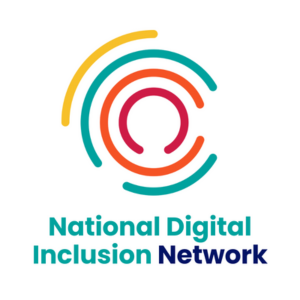Insights
INSIGHTS
All Topics
My Account
An overview of the W3C Accessibility Standards
04 Jul 2022by kirsty marrins
Accessibility is about reaching as many people as possible. Here’s how charities can meet accessibility standards
With one in five people in the UK living with an impairment, disability, or a long-term illness, it’s so important that your website is accessible.
If your website doesn’t meet accessibility standards, you are excluding a large number of people from being able to access your services or support you through donations or fundraising.
Accessibility, however, is not just about ensuring that people with disabilities can access your content and services. Accessibility is about making sure that as many people as possible can do so.
What is W3C?
W3C is the World Wide Web Consortium that develops international Web standards, such as HTML and CSS. All their standards are reviewed for accessibility by the Accessibility Platform Architecture (APA) Working Group.
Is accessibility a legal requirement?
All public sector bodies must meet the Public Sector Bodies (Websites and Mobile Applications) (No. 2) Accessibility Regulations 2018. Public sector bodies include central and local government organisations and some charities and non-government organisations.
The regulations say that you must make your website or mobile app accessible by making it ‘perceivable, operable, understandable and robust’. In addition, you need to include, and update, an accessibility statement on your website.
While all UK service providers have a legal obligation to make reasonable adjustments, under the Equality Act 2010, not all charities need to meet the accessibility regulations. Charities are exempt unless they are mostly financed by public funding, provide services that are essential to the public or are aimed at people with disabilities.
Web Content Accessibility Guidelines (WCAG)
WCAG is based on four design principles, which are:
- Perceivable
- Operable
- Understandable
- Robust
It’s important to note these principles are not about technology per se but rather about how people interact with content. For example, if they use a keyboard to navigate instead of a mouse or if they use a screen reader to read out content.
Let’s look at the principles in more detail.
Principle 1: Perceivable
This principle is about perceivable information and user interface. Essentially it means that users need to be able to use your service and perceive information, using their senses. Examples of this, include:
- Providing alt text on images
- Captioning video content and providing transcripts for audio and video
- Content must be formatted and structured logically, using headings and subheadings. Content needs to be navigated and read by screen readers
- Using colours for text that show up easily against the background so that they can be read clearly. Here’s a free contrast checker to check accessibility
Principle 2: Operable
This principle is about ensuring that people can find and use your content, regardless of how they access it. For example, if they are using voice assisted technology.
To meet this principle, here are some examples of what you need to do:
- Use descriptive links so users know where the link will take them. For example, instead of hyperlinking ‘download’, you would hyperlink ‘download our guide to understanding what benefits you can claim’
- Allow users to play, pause or stop any moving content
- Make sure your website works for users who only use a keyboard
- Use descriptive titles for pages
Principle 3: Understandable
This principle focuses on users being able to read content and that the content can be understood by the broadest audience possible. To meet this principle:
- It needs to be clear to the user what language the content is written in and tell them if the language changes
- Any user interface components that are repeated on web pages must have the same labels
- Features must look consistent
- Form fields must have visible labels that are meaningful and any errors in forms should be easy for people to identify and correct
Principle 4: Robust
This principle is about ensuring that content is robust and compatible with different browsers and assistive technologies, for example. How this principle can be met is:
- Making sure the code on your website lets assistive technologies know what every interface component is for
- Using HTML so that user agents (such as assistive technology) can interpret content
Is your website WCAG compliant?
While it may not be a legal requirement for your website to be WCAG compliant, it’s important that your website is accessible to as many people as possible. Siteimprove provides a free WCAG compliance checker, which will give your website a compliance score out of 100. You will also receive an overview of your website’s accessibility, with 15 common accessibility issues checked, as well as recommendations on how to improve.
More on this topic
07 Mar 2025by Laura Stanley
Marketing trends for charities in 2025
Recommended Products
Recommended Products
07 Mar 2025by Laura Stanley
Marketing trends for charities in 2025
17 Feb 2025by Laura Stanley
Charity Digital Exchange: Grow your charity with AWS
Our Events
Charity Digital Academy
Our courses aim, in just three hours, to enhance soft skills and hard skills, boost your knowledge of finance and artificial intelligence, and supercharge your digital capabilities. Check out some of the incredible options by clicking here.























